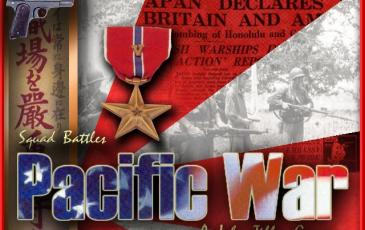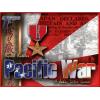| Rating: |
7.93 (4) |
| Games Played: |
9 |
| SM: |
2 |
| Turns: |
12 |
| Type: |
Custom |
| First Side: |
China |
| Second Side: |
Japan |
Scenario Size: Medium
Estimated Playing Time: 40 minutes
2 Player Game? Yes
Combatants: Nationalist China vs Japan
August 29th, 1939, Shansi Province, China, 0300 Hours
Designers Notes: This scenario is intended to be played from the Chinese side vs. the A/I and is intended as a strong challenge with the variable ending option turned off. If playing as H2H game, it is advised that the more skilled of the two play the communists.
Chinese Commander: Due to the outstanding efforts of your comrades, Chairman Mao's offensive has brought our noble cause great honor. Now it is your time to prove your worth to our people. A small IJA communications outpost has been operating in your AOR for far too long and hindering our movement with air strikes and artillery. You must strike hard and fast, as IJA Military Police are conducting patrols in the area. Spare no quarter to the oppressors.
IJA Commander: Most honorable Taii, be advised that intelligence reports that communist guerrillas may be on the move in your vicinity. Divisional Headquarters has dispatched a platoon of Military Police to provide your outpost with additional security. You are instructed to place as many of your men as possible on the line and hold in the event of attack. Reinforcements are en route. Banzai!
Historical Background: During the winter of 1938, the IJA had decided to re-evaluate their strategy in China. The illusion of quick victory had become a hard learned lesson in the form of sheer Chinese determination and the vastness of the area that needed to be covered. The aforementioned proving far too exhausting for the capabilities of Emperor Tojo's Chinese Expeditionary Army, the IJA decided on a war of attrition to grind the Chinese into submission. Adhering to this doctrine, and by confining themselves to local offensives, they often lured the Chinese into scenarios favoring the IJA and the CEA would destroy large Chinese forces with a minimum of effort.
As 1939 came to a close and the majority of the indigenous forces across the nation of China were continuing to be pummeled by the IJA, there existed an area in which the underarmed and outgunned Chinese were dealing the Japanese a series of humiliating defeats.
In the province of Shansi, Mao Tse-tung's Communist 8th Route Army had been liberating village after village in victories unknown thus far in the second Sino-Japanese War. Using guerrilla tactics that are often wrongly accredited to the Viet Cong, Tse-tung was giving birth to a new form of warfare and training the very men who would teach it to those communist Vietnamese in the decades to follow. These aforementioned men, Giap and Ho Chi Minh, ironically were serving beside a United States military officer who was also being educated in the 8th Route Army at this time. Lt. Col. Evans Carlson would bring these lessons to the ranks of the Marine Raiders in 1942 and run his units much to the tune of Mao Tse-tung's communist guerrillas.
Always outnumbered and outgunned, the Chinese Guerrillas would rely on the cover of darkness and stealth, striking rear areas with utmost precision and speed. This scenario depicts a larger sized raid against Japanese communication outpost, a week after the declaration of the "Hundred Regiments Offensive". This operation was an extended campaign of raiding style attacks on IJA outposts and communications. Proving outstandingly successful, a humiliated CEA would launch a series of counter-offensives aimed at Communist controlled areas from 1941-43, costing the Red Chinese an estimated 100,000 casualties and throwing them permanently off balance.
References:
Selected Works of Mao Tse-tung Vol.'s I & IV - Mao Tse-tung
The Chinese Army: Organization and Military Efficiency - Col. Evans Carlson
The Sino-Japanese War 1937-41 - Frank Dorn
China's Bitter Victory, The War with Japan, 1937-45 - M.E. Sharpe

 3 - 0 - 6
3 - 0 - 6

































